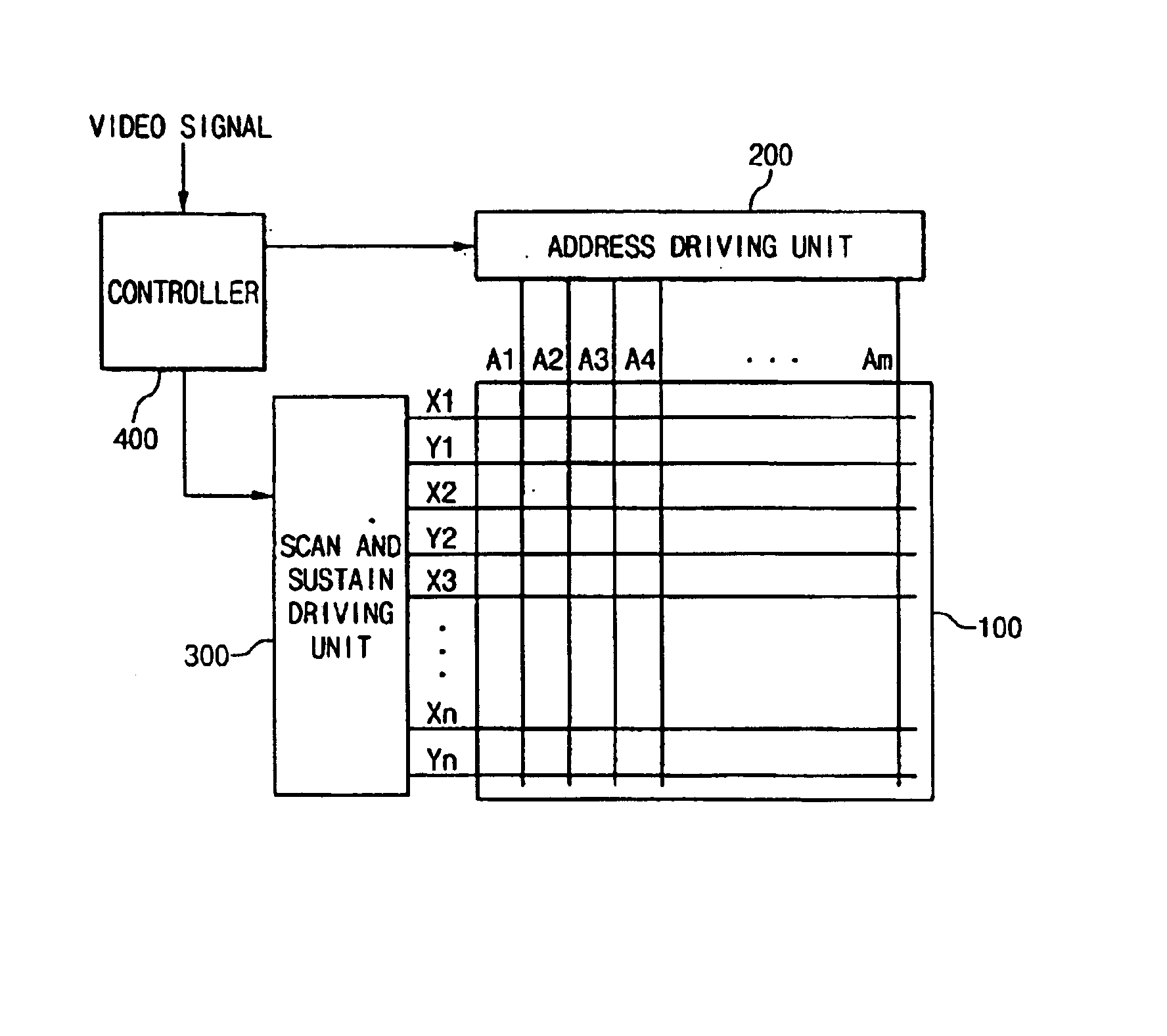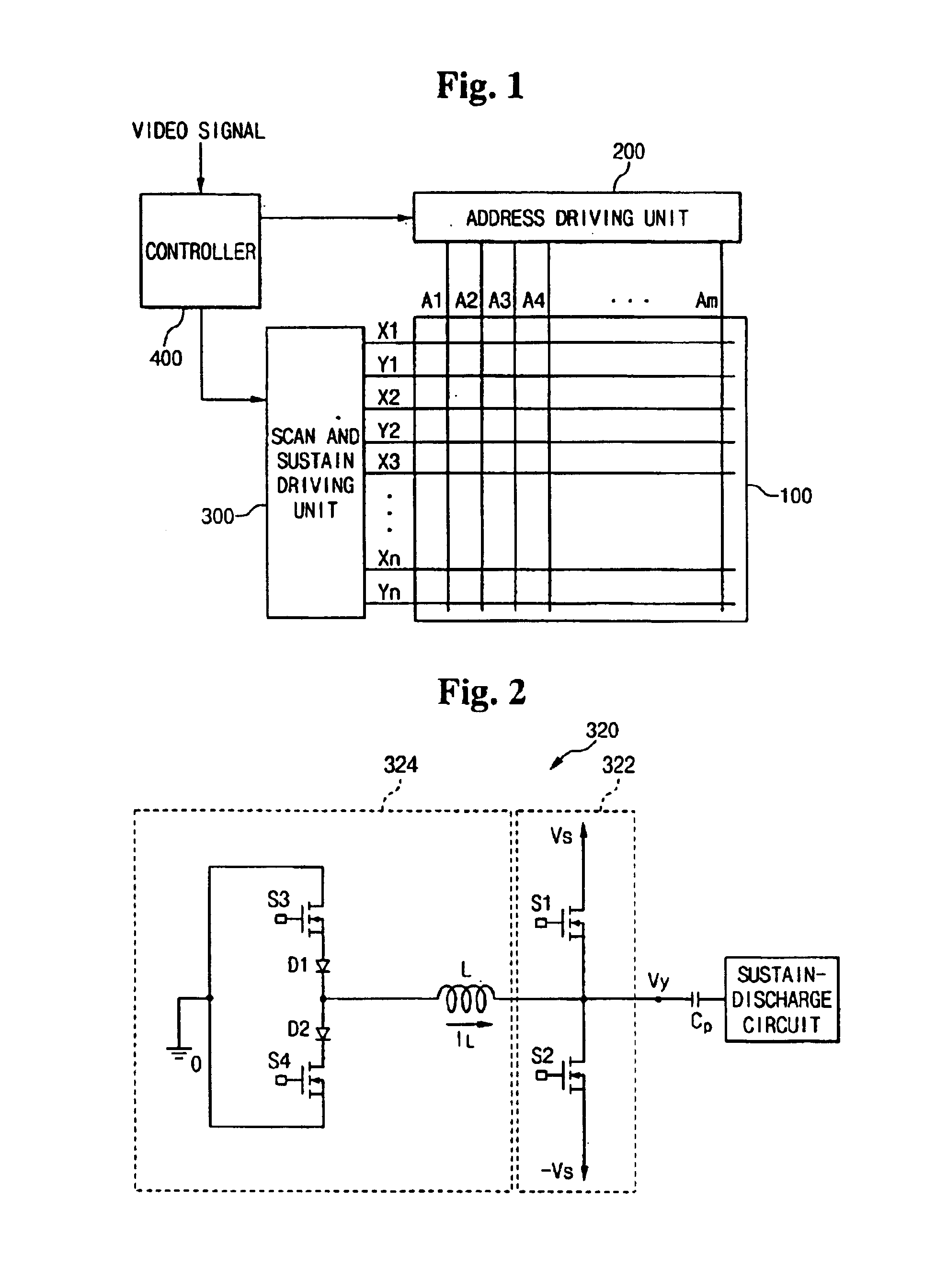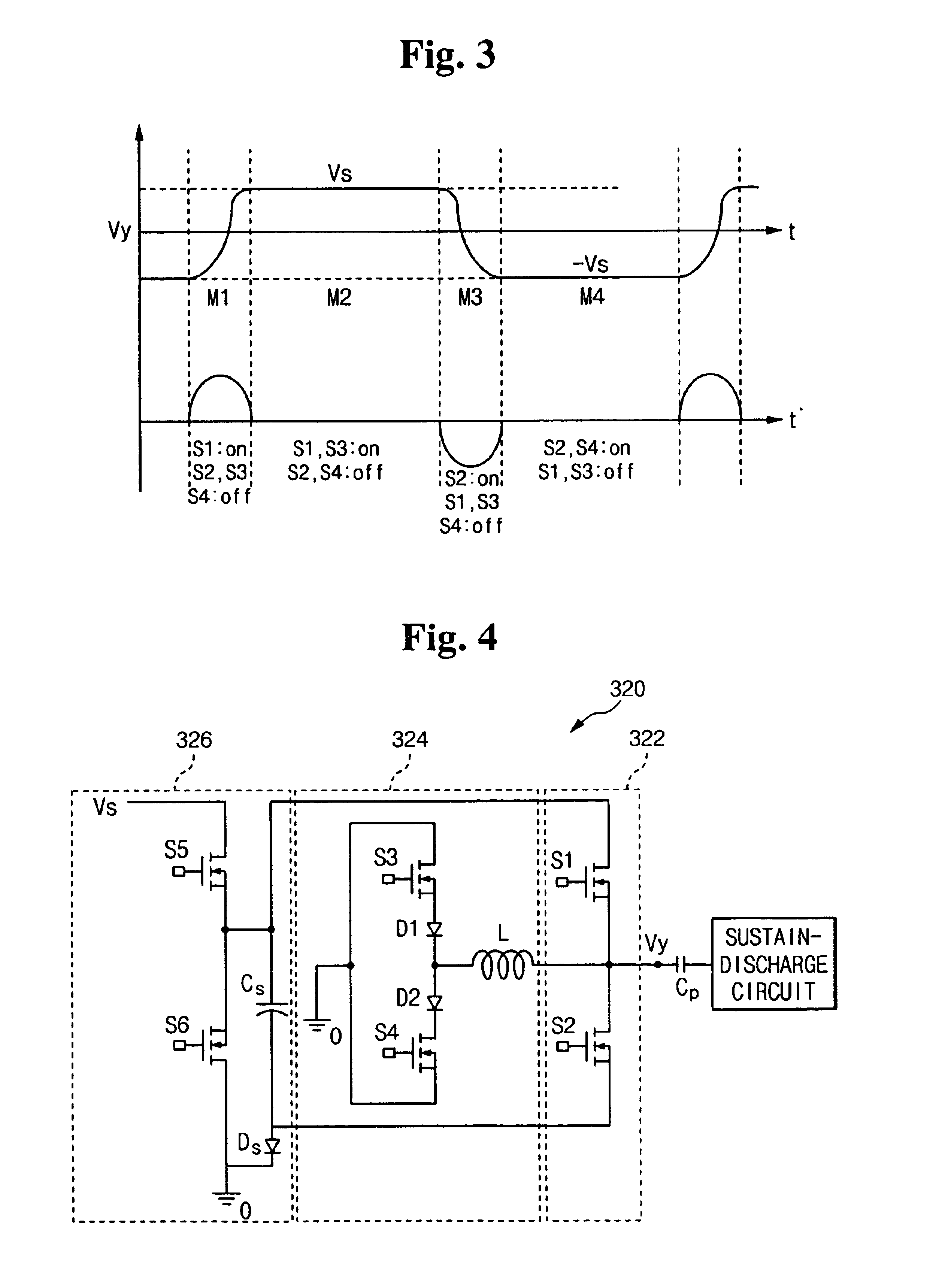Apparatus and method for driving a plasma display panel
a plasma display panel and apparatus technology, applied in the direction of instruments, static indicating devices, etc., can solve the problems of complex structure of the driving circuit, limited current, and inability to completely operate the conventional sustain-discharge circui
- Summary
- Abstract
- Description
- Claims
- Application Information
AI Technical Summary
Benefits of technology
Problems solved by technology
Method used
Image
Examples
first embodiment
[0044]The sustain-discharge circuit 320 according to the present invention will now described in detail with reference to FIGS. 2 and 3.
[0045]FIG. 2 is a circuit diagram showing the sustain-discharge circuit of the PDP according to the first embodiment of the present invention. FIG. 3 is a timing diagram showing the driving of the sustain-discharge circuit of the PDP according to the first embodiment of the present invention.
[0046]As shown in FIG. 2, sustain-discharge circuit 320 according to the first embodiment of the present invention includes sustain-discharge unit 322 and power recovering unit 324. Sustain-discharge unit 322 includes switching elements S1 and S2 serially connected to each other between power source Vs and power source −Vs. The contact point of switching elements S1 and S2 is connected to an electrode (assumed to be a Y electrode) of a plasma panel (a panel capacitor Cp because the plasma panel operates as capacitive load). Power sources Vs and −Vs supply voltag...
second embodiment
[0059]As shown in FIG. 4, sustain-discharge circuit 320 according to the present invention further includes power source unit 326. Power source unit 326 includes switching elements S5 and S6. Switching elements S5 and S6 are serially connected to each other between power source Vs and ground. Capacitor Cs is connected between the contact point of switching elements S5 and S6 and switching element S2 of sustain-discharge unit 322. The contact point of switching elements S5 and S6 is connected to switching element S1. Diode Ds is connected between capacitor Cs and ground. Accordingly, voltage −Vs can be applied to panel capacitor Cp using the voltage charged to capacitor Cs without a power source −Vs.
[0060]The operation of the sustain-discharge circuit according to the second embodiment of the present invention will now be described with reference to FIG. 5 on the basis of a difference between the first embodiment and the second embodiment.
[0061]As shown in FIG. 5, the driving time ac...
third embodiment
[0073]Also, Y electrode Vy of panel capacitor Cp is sustained to be voltage Vs by turning on switching element S1. At this time, because switching element S1 is turned on in a state where a voltage between a drain and a source is 0, switching element S1 can perform zero voltage switching. Accordingly, the turn-on switching loss of switching element S1 is not generated. Because the energy accumulated in inductor L is used in the third embodiment, it is possible to increase Y electrode voltage Vy to Vs even when a parasitic component exists in the sustain-discharge circuit. That is, the zero voltage switching can be performed even when the parasitic component exists in the circuit.
[0074]As shown in FIG. 10D, in the mode 4 (M4), switching element S1 continuously is turned on. Accordingly, Y electrode voltage Vy of panel capacitor Cp is continuously sustained to Vs and switching element S3 is turned off when current IL that flows through the inductor decreases to 0 A.
[0075]In a mode 5 (...
PUM
 Login to View More
Login to View More Abstract
Description
Claims
Application Information
 Login to View More
Login to View More - R&D
- Intellectual Property
- Life Sciences
- Materials
- Tech Scout
- Unparalleled Data Quality
- Higher Quality Content
- 60% Fewer Hallucinations
Browse by: Latest US Patents, China's latest patents, Technical Efficacy Thesaurus, Application Domain, Technology Topic, Popular Technical Reports.
© 2025 PatSnap. All rights reserved.Legal|Privacy policy|Modern Slavery Act Transparency Statement|Sitemap|About US| Contact US: help@patsnap.com



